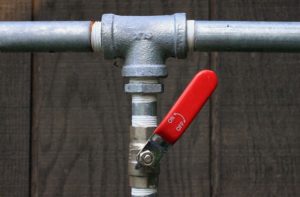How Long Do Different Types of Plumbing Last and Do I Need Maintenance?
 Why does it matter?
Why does it matter?
The different types of plumbings have different longevity, so it’s important to keep an eye on you’re home’s’ water systems. The primary reason to do this would be to prevent any catastrophes in the form of leaks from occurring. These can cause a lot of damage to the house, especially if they occur overnight and remain unnoticed. Other issues that may arise include flakes or piping in the water, or small leaks that over time cause mold and damage.
How to check?
The most effective way is going through the home and checking all the visible pipes. Some universal signs something is off are cracks, mold, warping, and peeling. If anything in the piping material seems unnatural, you know you have an issue. Different material, however, show different signs. Don’t forget to check under sinks, and around toilets as well. Doing a general inspection like this is easy and free, although some issues are more difficult to diagnose without a trained eye.
Copper
Copper pipes are the color of pennies and are often greenish due to oxidation. These pipes have very high life expectancy but are occasionally prone to corrosion depending on a variety of factors. The corrosion is easy to see since it’s strong green contrasts starkly with the metal of the pipe. A little bit of corrosion is normal, but if you see large amounts you may want to keep an eye on that pipe segment or call a professional plumber.
PVC
PVC pipes are extremely long-lasting and rarely show any issues. The life expectancy for most PVC piping is at least 75 years, but this doesn’t cover leaks cause by other factors. There are many things that might cause leaks later on such as pressure in the pipes or on the pipes, small natural shifts in the house may cause stress on the joints, or a poorly assembled joint may leak after some time.
Steel
Steel pipes have very long lifespans as well, and are not used very frequently in residences. These pipes are easy to identify by color, and by magnet test. If the magnet does not respond we recommend immediately investigating to confirm its not lead piping, which was used decades ago but has since been found to be poisonous. Steel piping may show signs of rust or cracks due to to stress. The physical signs are somewhat obvious and should not be ignored!
Brass
Brass piping is very similar to copper in appearance and has since been replaced with copper. Brass pipes also have life expectancy above 50 years, but most installations which use them are already quite aged and should be regularly checked to prevent accidents. Brass piping is like copper but less flexible, and does not corrode, so finding signs of stress is more difficult unless there is visible leakage.
Most homes contain a large mix of different plumbings, so it may be hard to keep an eye on everything. We recommend calling a plumbing company to do a checkup at least once every 5 years. By providing regular maintenance and diagnostics you can greatly diminish the chance of any unexpected issues occurring.


